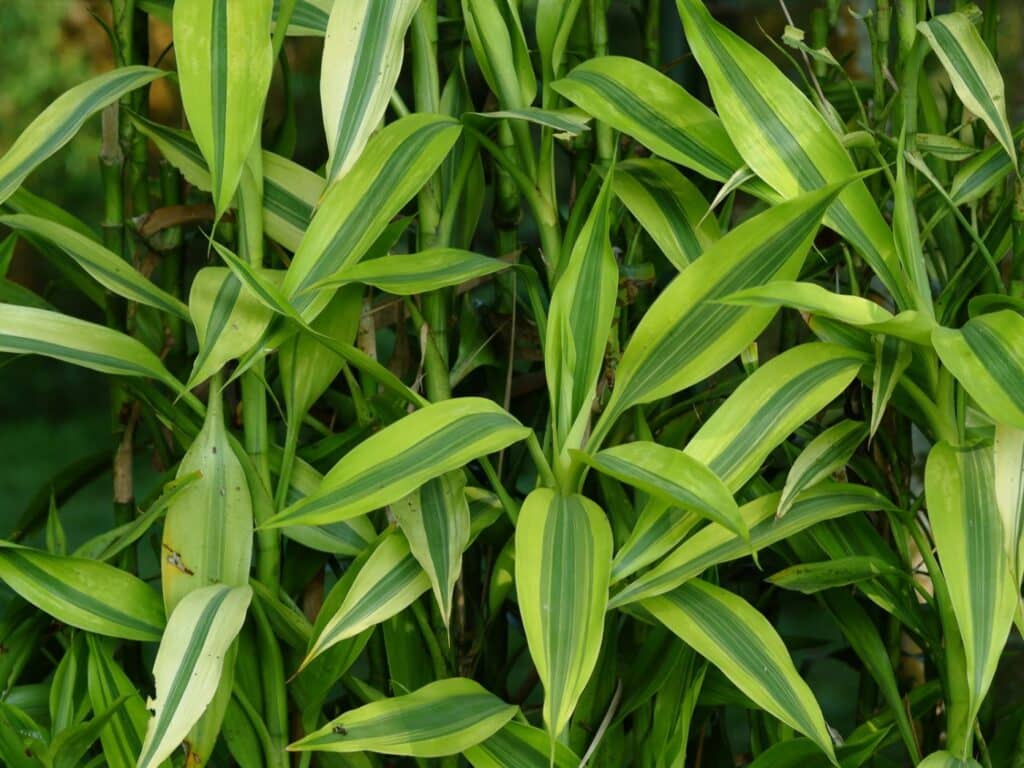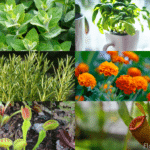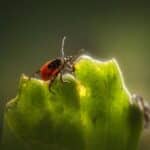Ever looked at your lucky bamboo and wondered why its vibrant green leaves are turning a worrisome yellow? You’re not alone. This common issue baffles many plant enthusiasts and can be quite disheartening. But don’t worry, it’s not always a death sentence for your beloved plant.
In this article, we’ll delve into the causes behind this phenomenon and, more importantly, how you can fix it. So, sit back, relax, and let’s unravel this botanical mystery together. Your lucky bamboo’s health could be just a few tips away.
Understanding Lucky Bamboo
The Significance of Lucky Bamboo
Let’s start by clarifying why lucky bamboo commands respect. It’s a plant with deep roots in Asian cultures, particularly in China. This cherished plant is often associated with the ancient art of Feng Shui and symbolizes good fortune, prosperity, and life energy known as ‘Chi.’
For specific events such as housewarmings or business openings, gifting a lucky bamboo holds a symbolic message to the recipient: You’re wishing them luck, prosperity, and positive energy.
Common Varieties and Their Care
Next up, get acquainted with the two popular types of lucky bamboo.
First, we have Dracaena sanderiana, noted for its thin, upright stalks, while the other, Dracaena braunii, is easily recognized by its thicker, curvaceous stalks. These relatives of the lily family are not true bamboos, despite their common name. They’re rainforest plants which require moderate sunlight and temperatures, consistent hydration, and do exceptionally well in water-based environments.
Be attentive to your plant, give it a trim if it outgrows its environment, and change its water every two weeks to prevent any build-up of unwanted salts and chemicals. Stick to these basics and keep your plant’s environment stable, and you’ll help your lucky bamboo stay as green and vibrant as it should be.
Factors That Cause Yellowing Leaves

There are several reasons why your lucky bamboo leaves may well turn yellow. Varying from changes in water quality to different light exposure, abundance or lack of nutrients, and even pot or soil conditions. Each of these factors can impact the overall health of your plant.
Water Quality and Overwatering
Water is vital for the health of your lucky bamboo. However, water filled with chemicals, or simply too much of it, can harm the plant. Tap water often contains chlorine and fluoride, these elements, though small in concentration, can harm your lucky bamboo over time.
Overwatering your plant can also cause issues, suffocating the roots and leading to yellowing leaves. It’s beneficial to keep your bamboos hydrated, just not overly so.
Light Exposure and Lack of Nutrients
Your lucky bamboo isn’t too demanding when it comes to light exposure. It prefers indirect sunlight over direct, as the latter can severely burn the leaves causing them to turn yellow.
Conversely, a spot that’s too dark can weaken the plant’s defenses and also lead to leaf discoloration. Lucky bamboos also require a balance of nutrients, Lack of nutrients can cause the leaves to lose their vibrant green color and turn yellow.
Pot and Soil Conditions
The conditions in which your lucky bamboo grows impact its overall well-being directly. Avoid containers without proper drainage; water stagnation can damage the roots.
Soil or waterlogged can encourage the growth of disease-causing fungi and bacteria leading to yellow leaves. The plant tends to thrive in slightly acidic to neutral pH soil, so remember to keep a check on soil conditions as well.
Preventive Measures and Solutions
Having a healthy, vibrant lucky bamboo plants in your home or office doesn’t hinge on luck. It calls for an understanding of caring for the plant and implementing effective preventive measures. Below, Let’s delve into the subject.
Choosing the Right Water
Bamboo plants frown upon tap water. It often contains fluoride, chlorine, and other chemicals that may tarnish their green sheen. Opt for filtered or purified water, ideally at room temperature. If bottled water isn’t within reach, don’t worry.
Simply get tap water and let it sit overnight. Come morning, harmful substances will have evaporated. Remember, consistency in water quality gives your bamboo a chance to thrive.
Managing Light and Fertilizer
Indirect, low-level sunlight keeps your bamboo plant at its best. Shield it from direct sunlight as the bright light can scorch the leaves. Pair that with timely application of a balanced liquid fertilizer. Refrain from overdoing the dosages — once a month typically suffices. Too rich a diet results in a yellowish tinge to the leaves.
Repotting and Root Health
Transplant your lucky bamboo only when absolutely necessary. Frequent changes to its home environment can trigger stress, leading to leaf yellowing. Choose a pot that’s wider than it is tall to allow for root spread.
Use a well-draining potting mix, which prevents water retention and subsequent root rot. Check the roots regularly, excising any blackened or mushy sections. It’s an effort towards keeping your bamboo plant robust and its leaves a healthy shade of green.
Reviving Yellow Lucky Bamboo
Reverting your lucky bamboo’s yellow leaves to a lush green isn’t an unattainable goal. Remember, each step taken revamps the plant’s health and aesthetics.
Trimming Techniques
Firstly, prioritize trimming. Yellow leaves or sections mean they’re basically unusable to the plant. These areas are already dead and they’re not assisting with photosynthesis. It’s imperative to cut these parts off at the earliest. Use sterilized pruning shears, reducing potential risks of infecting your plant in any way. Follow these steps:
- Identify the yellow sections.
- Trim the yellow parts, leaving the green healthy areas intact.
- Disinfect the cut areas with cinnamon – a great natural fungicide.
Pro tip: Make a clean cut. Don’t leave stubs as they can attract pests or lead to fungal growth.
Changing Care Routines
Next, revamp your care routine. Start by examining your water. High chlorine levels in tap water can harm your lucky bamboo. Opt for filtered, distilled, or even rain water if it’s available.
Light conditions demand scrutiny too. Lucky bamboos perform well under indirect sunlight. Direct sun can cause leaf burn leading to yellow leaves. Identify a spot in your home that receives warm, indirect sunlight, making it your plant’s new habitat.
Look at your plant’s diet next. Improper feeding may well be causing leaf yellowing. Use a weak solution of liquid houseplant fertilizer every month during spring and summer.
Finally, observe the temperature in your home. Lucky bamboos prefer a temperature between 65°F to 95°F. They’re not fans of sudden changes in temperature, so try to keep it consistent.
When to Say Goodbye to Your Plant
Even with the utmost care, lucky bamboo plants can still deteriorate. Knowing when to part ways with your plant is crucial.
Assessing Plant Health
The first step in this procedure, assessing your plant’s health, calls for a keen eye. Look for various signs like leaves turning yellow persistently, despite implementing all care routines.
A closer examination can also reveal additional signs such as soft, squishy stems that indicate severe root rot. If more than 50% of your plant shows these symptoms, it’s time to bid your lucky bamboo farewell.
Propagation and Starting Fresh
However, if a part of your lucky bamboo still maintains a healthy green hue, consider propagation. Carefully cut the healthy section and place it in a container filled with filtered water. Remember to change the water every week and place it indirect, bright light.
You’ll notice new roots developing in about a month. Consider this fresh start as an opportunity to implement your learned lessons about lucky bamboo care, extending the lifespan of the newly propagated plant.
FAQs
Why are my lucky bamboo leaves turning yellow?
The yellowing of leaves in lucky bamboo plants can be attributed to factors such as poor water quality or inadequate light exposure. Regular care and attention to these elements can help in preventing this problem.
How can I revive my yellow lucky bamboo?
To revive your yellow lucky bamboo, trim off the yellow sections and make adjustments to the care routine, including improving water quality, ensuring the right light exposure, and applying fertilizer appropriately. Also, maintain a consistent temperature for optimal growth.
When should I say goodbye to my lucky bamboo plant?
You should consider saying goodbye to your plant when you notice persistent yellow leaves or severe root rot despite making efforts to revive it. These may be signs of a deteriorating health condition.
Can I propagate my lucky bamboo plant?
Yes, you can propagate your lucky bamboo plant. Healthy sections of the plant can be propagated to start fresh. This also provides an opportunity to apply learned care techniques and extend the lifespan of the new plant.
Up next:
- Bamboo Leaves Turning Yellow? Causes and Seasonal Care Tips
- Yellow Spots on Apple Tree Leaves: Causes, Prevention, and Care
Image by serezniy – wisely/depositphotos







